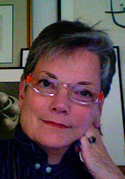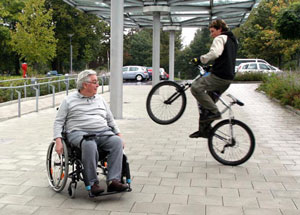 |
→ October 2005 Contents → Update
|
UPDATE
Horst Faas in Murnau |
 |
||||||
|
Renowned photojournalist and two-time Pulitzer Prize winner Horst Faas was in Hanover, Germany, Oct. 1, 2005, for an award ceremony of the German Photographic Society. Faas was awarded the prestigious Dr. Erich Salomon Prize for his lifetime achievement, including his two Pulitzers for news photography, one in Vietnam, one in Bangladesh. The Salomon Prize was established in 1971 to honor outstanding use of photography in the press. It celebrates the memory of the great Weimar Republic photographer, Dr. Erich Salomon, widely regarded as the principal founder of modern photojournalism.
In addition to receiving the award, he visited his photo retrospective, "Visible War," for the first time. The exhibition traveled to Hanover from Frankfurt.
The outing to Hanover was Faas' first trip since his paralysis on May 4 while in Hanoi, the immediate result of a blood vessel bursting on his spine.
In early September, I visited with him at the Unfallklinik Murnau, a Bavarian clinic dedicated to spinal injuries. He asked that I write a short piece and tell friends about the extent of his paralysis.
Horst, 72, is paralyzed from his chest down. He has what is described as phantom pain manifesting itself in a tight, burning band across his chest where good nerve endings meet the paralyzed. He also has no feeling in his lower extremities. This means that while learning to move from a couch to his wheelchair on a piece of curved plastic, he has to be careful not to injure his feet and legs. He would never feel it. His legs are gently strapped together so nothing happens to him in the wheelchair. Since he has no use of stomach muscles or back muscles, he can only turn over with help. In the clinic two nurses assist him getting from bed to wheelchair by using a large winch system to swing him over the chair. He cannot take care of himself.
Horst's trip to Hanover was his first and there will be many more. [He continues his interest in early transmitting equipment and is looking for a museum to house a vast collection.]
Longtime friend and AP colleague John Nance reports: "Horst said he will remain at the clinic until 'I can be released with the confidence that, together with some non-clinical nurses, I can care for myself.'... Also, he will need physical/medical assistance when he travels. He still feels some chronic pain in his back, but with time has come to accept it. There are no feelings, of course, in the paralyzed region.
"Considering Horst's condition and the future, Horst said, 'I've done what I've always wanted to do, so things that I can't do now I've already done. I'm not regretting what's not going to happen now; I'm looking for adventure in things I've never experienced ... also with just simple, pedestrian things, like how to ride a street car, go to a theater, and so on.'"
© Marianne Fulton
Senior Editor
|
|||||||
Back to October 2005 Contents
|
|

